Vigdís Finnbogadóttir
Vigdís Finnbogadóttir (Icelandic: [ˈvɪɣtis ˈfɪnpɔɣaˌtouʰtɪr̥] ⓘ; born 15 April 1930) is an Icelandic politician who served as the fourth president of Iceland from 1980 to 1996. Vigdís is the first woman in the world to be democratically elected as a head of state. Having served as president of Iceland for 16 years, she is the longest-serving elected female head of state in history. Vigdís is a UNESCO Goodwill Ambassador and a member of the Club of Madrid.
Vigdís Finnbogadóttir | |
|---|---|
.jpg.webp) Vigdís in 1985 | |
| 4th President of Iceland | |
| In office 1 August 1980 – 1 August 1996 | |
| Prime Minister | Gunnar Thoroddsen Steingrímur Hermannsson Þorsteinn Pálsson Davíð Oddsson |
| Preceded by | Kristján Eldjárn |
| Succeeded by | Ólafur Ragnar Grímsson |
| Personal details | |
| Born | 15 April 1930 Reykjavík, Kingdom of Iceland (Now Iceland) |
| Alma mater | University of Paris University of Grenoble University of Copenhagen University of Iceland |
Early life and career
Vigdís was born on 15 April 1930 in Reykjavík.[1] Her father was a civil engineer, and her mother was a nurse who headed the national nurses association.[2]: 41 The following year, her younger brother Þorvaldur was born; he did not survive to adulthood, as he drowned in Hreðavatn.[3] Vigdís enrolled at the University of Grenoble in 1949, later switching to the Sorbonne.[4] She studied English and French literature, giving special emphasis to plays,[2]: 41 and she graduated in 1953.[4]
Vigdís was married in 1954.[4] The same year, she began acting,[5] co-founding a theatre group. She also worked on the translation of several French plays.[1] She enrolled at the University of Copenhagen in 1957, where she studied theatre history until the following year.[4] She was divorced in 1963.[4] Vigdís participated in the anti-military rallies that took place in the 1960s and 1970s, protesting the United States military presence in Iceland.[2]: 41 Vigdís adopted a daughter in 1972,[2]: 42 making her the first single woman in Iceland to adopt a child.[4]
Vigdís taught French lessons on television for RÚV beginning in 1972, making her a well known figure throughout the nation.[2]: 41 In the same year, she was appointed the artistic director of the Reykjavík Theatre Company.[5] She became a member of the Advisory Committee on Cultural Affairs in the Nordic Countries in 1976, and she became the organisation's chair in 1978.[2]: 41 She continued in all of these positions until she became President of Iceland in 1980.[2]: 41 [5] Other jobs she held early in life included her work as a French teacher at several colleges, including at the University of Iceland, and her work as a tour guide with the Icelandic Tourist Bureau in the summers. She eventually became the head of the Icelandic Tourist Bureau.[4]
President of Iceland
| Presidential styles of Vigdís Finnbogadóttir | |
|---|---|
 | |
| Reference style | Virðulegi forseti Íslands Her Excellency |
| Spoken style | Yðar Hátign Your Excellency |
| Alternative style | Frú Forseti Madam President |
Vigdís ran in the 1980 presidential election.[6] During her campaign, her anti-military position and her opposition to a United States presence in Iceland led to allegations that she was sympathetic to communism.[7] Vigdís ran for president to prove that women were able to lead political campaigns, and she did not expect to win.[6] Despite this, Vigdís won the election on 29 June 1980.[4] The vote was split between four candidates, and she prevailed with 33.6% of the vote.[2]: 42 Vigdís took office on 1 August 1980.[5] She is the fourth president of Iceland and the first woman to ever be democratically elected as a head of state in any country.[2]: 39 [8] Shortly after she took office, the number of women in the Althing saw a significant increase.[6]
Vigdís was re-elected without opposition in the 1984 presidential election.[2]: 36 She oversaw the Reykjavík Summit on 11–12 October 1986 between American president Ronald Reagan and Soviet president Mikhail Gorbachev, which is credited with improving relations between the countries and bringing the Cold War closer to an end.[7] In the 1988 presidential election, Vigdís became the first incumbent president of Iceland to face a challenger in the presidential election. The challenger fared poorly, and Vigdís won with 92.7% of the vote.[2]: 42 She was again re-elected without opposition in 1992.[2]: 36
Though the presidency is mostly ceremonial, Vigdís became an active president, using the role to represent the nation and to inform the national identity through cultural initiatives.[2]: 42 Vigdís is an environmentalist, and she used her presidency as a platform to advocate for environmental issues. She led a campaign for reforestation in Iceland, and she called for the prevention of topsoil loss.[4] Vigdís is also a pacifist,[2]: 42 and she describes herself as a "peace person".[7] She was also an advocate for gay rights as president.[2]: 43
The decision Vigdís considered "the most difficult episode" of her career took place in 1994 during the debate on joining the European Economic Area. A strong opposition existed against European integration in Iceland, but Vigdís supported the European Union and European integration, and she refused to use her presidential veto to block Iceland's association with the European Economic Area.[5] Vigdís decided not to run for a fifth term as president, and her tenure ended in August 1996.[2]: 42 She served for 16 years. As of 2016, she remained the longest-serving female elected head of state in recorded history.[2]: 43
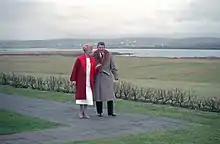
Post-presidency
Vigdís became the founding chair of the Council of Women World Leaders in 1996, and she was first chair of the World Commission on the Ethics in Scientific Knowledge and Technology from 1997 to 2001.[2]: 36–37 Since 1998, Vigdís has served as UNESCO's Goodwill Ambassador for languages.[9] She is also a member of the Fondation Chirac's honour committee.[10]
Vigdís continued her peace advocacy after her tenure as president ended. In 2016, she expressed her desire for the United States and Russia to visit Iceland to resolve their differences through discussion as they did during the Reyjkavík Summit. She has described the relations between the two countries as a new Cold War.[7]
Vigdís is a member of the Club of Madrid.[11]
Honours
National honours
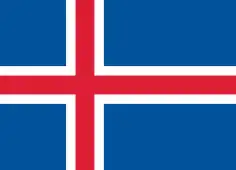 Iceland:
Iceland:
 Grand Cross with Collar of the Order of the Falcon (1 August 1980)[12]
Grand Cross with Collar of the Order of the Falcon (1 August 1980)[12]
Foreign honours
.svg.png.webp)
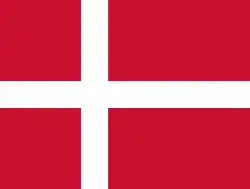 Denmark:
Denmark:
 Knight of the Order of the Elephant (25 February 1981)
Knight of the Order of the Elephant (25 February 1981)
 France:
France:
 Grand Cross of the Order of the Legion of Honour (12 April 1982)
Grand Cross of the Order of the Legion of Honour (12 April 1982) Knight of the Ordre des Arts et des Lettres
Knight of the Ordre des Arts et des Lettres
 Finland:
Finland:
 Grand Cross with Collar of the Order of the White Rose (1982)
Grand Cross with Collar of the Order of the White Rose (1982)
 Germany:
Germany:
 Grand Cross Special Class Order of Merit of the Federal Republic of Germany (1988)
Grand Cross Special Class Order of Merit of the Federal Republic of Germany (1988)
 Italy:
Italy:
 Knight Grand Cross with Collar of the Order of Merit of the Italian Republic (5 October 1987)
Knight Grand Cross with Collar of the Order of Merit of the Italian Republic (5 October 1987)
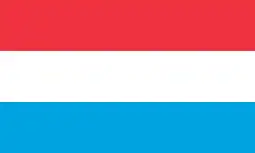 Luxembourg:
Luxembourg:
 Knight of the Order of the Gold Lion of the House of Nassau (1986)
Knight of the Order of the Gold Lion of the House of Nassau (1986)
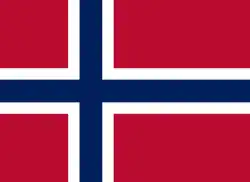 Norway:
Norway:
 Grand Cross with Collar of the Order of St. Olav (21 October 1981)
Grand Cross with Collar of the Order of St. Olav (21 October 1981)
 Netherlands:
Netherlands:
 Knight Grand Cross of the Order of the Netherlands Lion (18 September 1985)[13]
Knight Grand Cross of the Order of the Netherlands Lion (18 September 1985)[13]
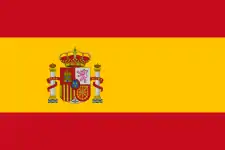 Spain:
Spain:
 Knight Grand Cross with Collar of the Order of Charles III (11 September 1985)[14]
Knight Grand Cross with Collar of the Order of Charles III (11 September 1985)[14]
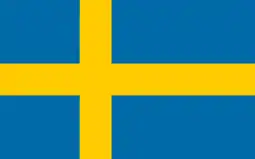 Sweden:
Sweden:
 Member with Collar of the Royal Order of the Seraphim (8 October 1981)
Member with Collar of the Royal Order of the Seraphim (8 October 1981)
 United Kingdom:
United Kingdom:
 Honorary Dame Grand Cross of the Order of the Bath (25 June 1990)[15]
Honorary Dame Grand Cross of the Order of the Bath (25 June 1990)[15] Honorary Dame Grand Cross of the Order of St Michael and St George (18 February 1982)
Honorary Dame Grand Cross of the Order of St Michael and St George (18 February 1982)
Honorary degrees
Vigdís has received honorary degrees from the following universities:
- University of Grenoble, France (1985)
- University of Bordeaux, France (1987)
- Smith College, U.S. (1988)
- Luther College, U.S. (1989)
- University of Manitoba, Canada (1989)
- University of Nottingham, Great Britain (1990)
- University of Tampere, Finland (1990)
- University of Gothenburg, Sweden (1990)
- The Gakushuin University in Tokyo, Japan (1991)
- University of Miami, U.S. (1993)
- University of Trondheim, Norway (1993)[16]
- St. Mary's University in Halifax, Canada (1996)
- University of Leeds, Great Britain (1996)
- Memorial University of Newfoundland, Canada (1997)
- University of Guelph, Canada (1998)
- University of Iceland, Iceland (2000)
References
- "Former President Vigdís Finnbogadóttir Turns 90 Today". Iceland Monitor. Retrieved 7 October 2023.
- Snaebjornsson, Inga Minelgaite (2016). ""President Vigdís": The End and the Beginning of Women's Agenda in Iceland". In Erçetin, Şefika Şule (ed.). Women Leaders in Chaotic Environments: Examinations of Leadership Using Complexity Theory. Lecture Notes in Social Networks. Springer. pp. 35–47. ISBN 978-3-319-44758-2.
- Einarsdóttir, Júlía Margrét (19 April 2020). "„Ég missti þann förunaut sem hefði fylgt mér alla ævi"". RÚV.
- "First female head of state, Vigdís Finnbogadóttir, elected 35 years ago today". Icelandmag. 29 June 2015. Retrieved 7 October 2023.
- "Vigdis Finnbogadottir, the world's first elected female president". France 24. 31 July 2020. Retrieved 7 October 2023.
- Topping, Alexandra (7 December 2017). "There's proof: electing women radically improves life for mothers and families". The Guardian. ISSN 0261-3077. Retrieved 7 October 2023.
- ""What now happens in the world is utterly awful," Vigdís Finnbogadóttir". The Independent Barents Observer. Retrieved 7 October 2023.
- "History: The world's first democratically elected female president". Iceland Monitor. 8 November 2016.
- "H.E. Vigdís Finnbogadottir". UNESCO. 22 June 2021. Retrieved 7 October 2023.
- "Honor Committee". Retrieved 22 May 2018.
- "Club of Madrid: Full Members". Club of Madrid. 2019. Retrieved 27 October 2019.
- "Icelandic Presidency Website". Archived from the original on 27 August 2016. Retrieved 22 May 2018.
- State visit, 1994, Photo Archived 3 June 2013 at the Wayback Machine of Beatrix, Claus and Icelandese President
- "Boletín Oficial del Estado" (PDF). boe.es. 14 September 1985.
- "Queen Iceland". gettyimages.fi. 25 June 1990. Retrieved 22 May 2018.
- "President Vigdis blir æresdoktor ved UNIT". Aftenposten. 1993. Retrieved 2 August 2010.